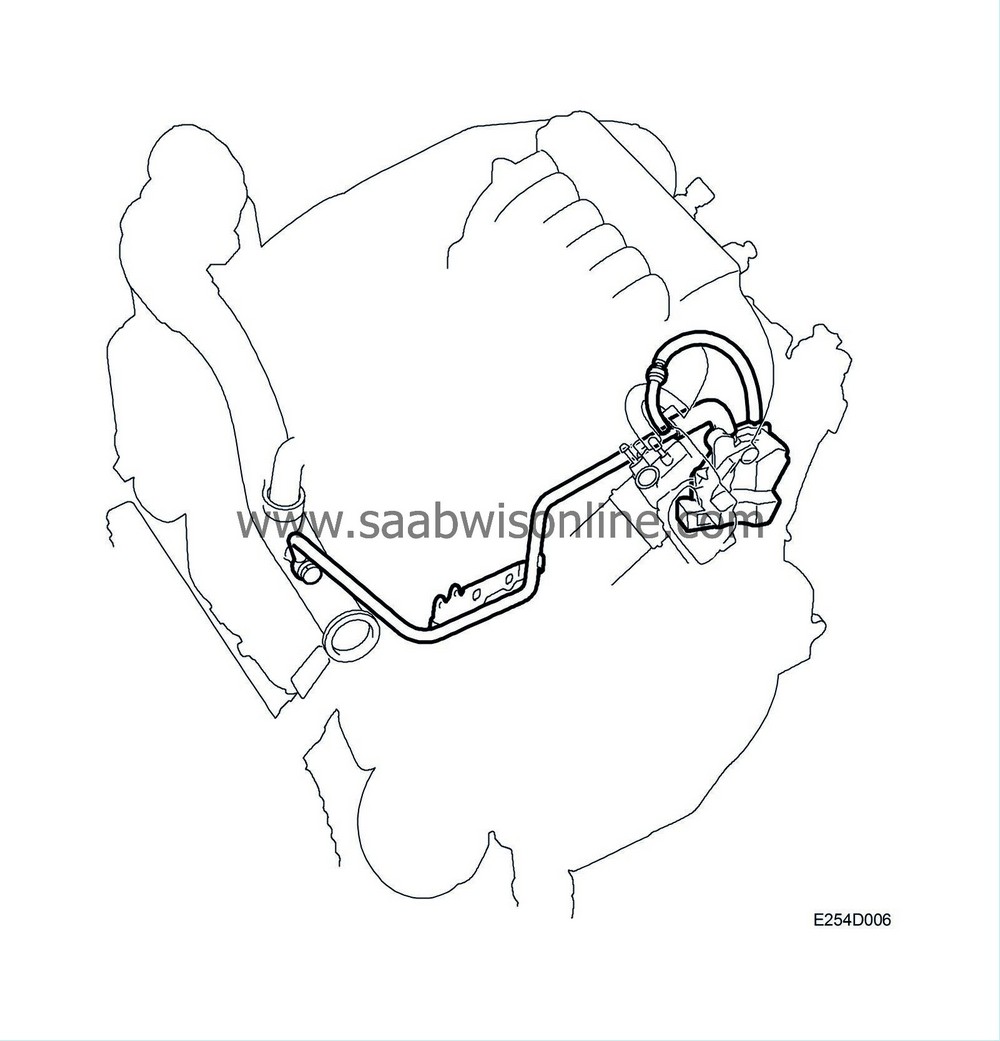Crankcase ventilation, V6
| Crankcase ventilation, V6 |
| General |
The combustion gases passing the pistons and piston rings must be allowed to pass out of the engine. If the crankcase gases are not evacuated, the pressure in the crankcase will keep on rising until something breaks. The crankcase gases must not be allowed to pass out into the engine bay as they contain large amounts of unburnt hydrocarbons.
To know for sure that no crankcase gases pass the various engine gaskets and seals, the vacuum in the engine intake manifold is used to create slight negative pressure in the crankcase. When the engine is under load, however, overpressure will be present in the engine's intake manifold and some other source of vacuum must therefore be used to produce negative pressure in the crankcase. The vacuum is then achieved by a venturi restriction in the turbocharger intake.
The turbo is highly sensitive to the pressure in the crankcase because its oil seals are of piston ring type and can only keep the oil in the turbo as long as the pressure in the turbo bearing's return oil duct is lower than the pressure in the exhaust manifold and turbocharger outlet. The bearing's duct is connected to the crankcase via the oil return line. Consequently, crankcase pressure must be lower than the pressure in both the exhaust manifold and turbocharger outlet.
The crankcase ventilation system has an oil trap which is bolted on top of the engine block beside the rear cylinder head.
| Operation |
To avoid icing, the system is water-heated.
Vacuum in the intake manifold
The crankcase gases are sucked out via the oil trap's small nipple and pass through a check valve on their way to the throttle body. To ensure that the volume of air passing through the throttle will not be excessive (and give rise to idle speed racing), the small nipple in the oil trap is restricted to 2.0 mm.To prevent the vacuum from becoming excessive, fresh air is admitted to the oil trap through the large-diameter crankcase ventilation line. The fresh air comes from the turbo intake pipe.



